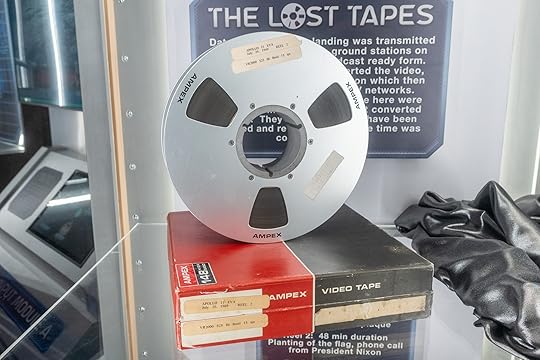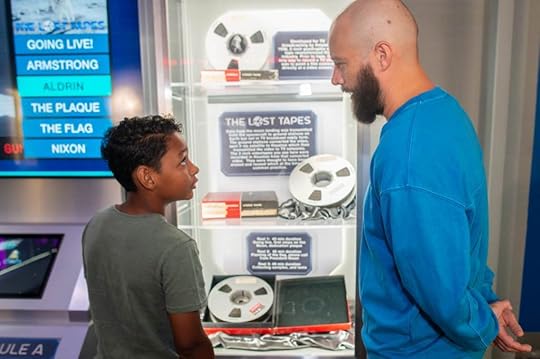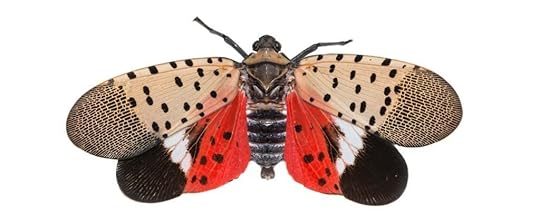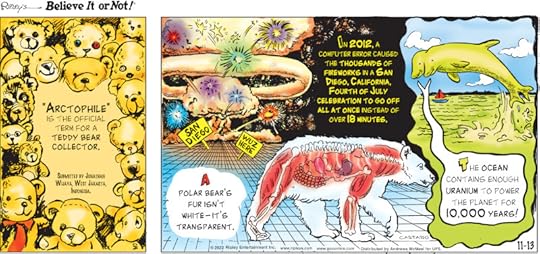Ripley Entertainment Inc.'s Blog, page 56
November 14, 2022
Lost and Found: Ripley’s Resurfaces Lost Apollo 11 Moonwalk Reels
Featured in Ripley's Believe It or Not!

In 1890, William Dickson unveiled the Kinetograph, making the first moving pictures possible. Within two years, he debuted the Kinetoscope, which projected these primitive films onto the big screen. And in 1894, Dickson’s partner Thomas Edison opened Earth’s first Kinetograph Parlors for public screenings. Dickson, Edison, and their early audiences could never have anticipated how integral moving picture technology would become in the 20th century.
What’s more, their invention paved the way, seven decades later, for the film documentation of humanity’s first steps on the lunar surface after Apollo 11’s successful landing. Yet, the original footage of the momentous occasion was nearly lost for good.
Keep reading for the full scoop on the vanishing Apollo 11 moonwalk films and where they can be found today. Hint: It’s a Ripley’s Believe It or Not! Odditorium!

In preparation for the 40th anniversary of the Apollo 11 moonwalk, NASA searched for the original tapes containing footage of the first lunar landing but to no avail. Officials had long thought the footage remained preserved at the Goddard Space Flight Center in one of the 2,614 boxes labeled as Apollo mission tapes. Since 1969, these boxes had sat at the storage facility, collecting dust.
But by 2006, the space agency announced the 14-track data tapes of the moonwalk could not be located. NASA stated, “An intensive search of archives and records concluded that the most likely scenario was that the program managers determined there was no longer a need to keep the tapes — since all the video was recorded elsewhere — and they were erased and reused.”
This explanation did little to assuage public concern. The realization the reels were missing stunned the nation. Gone was the original tape of Neil Armstrong’s famous declaration, “That’s one small step for man, one giant leap for mankind,” along with priceless material from the successful space mission.

What NASA didn’t know, however, is that a copy of the Apollo 11 mission videos had escaped erasure despite the odds. In 1976, a young intern at NASA named Gary George attended a government auction where he paid $217.77 for three truckloads of movie reels. He bought 1,150 tapes, which he hoped to sell independently to drum up money for college.
When some of the tapes didn’t sell, he decided to donate them to a church in Texas. The church produced a regular, syndicated television program, and George figured he could write off the donated tapes on his taxes. He enlisted his dad’s help to unload the boxes of videos at the church. In the process, they came across a few reels labeled: “Space Secret.”
George decided to hang onto the reels for safekeeping along with a few additional ones that he deemed potentially valuable, including a Bob Hope benefit special to raise money for the families of the Apollo 1 astronauts. The three astronauts had perished in a cabin fire during a rehearsal launch test at Cape Kennedy Air Force Station on January 27, 1967.

In 2006, George listened in shock as NASA announced the tragic news about the Apollo 11 moonwalk lost media. He remembered the reels labeled “Space Secret” that he had shelved decades prior and realized it was time to dust them off. He reached out to David Crosthwait, whose California studio boasted equipment capable of playing the vintage reels.
In December 2008, George and David played the two-inch videotapes for the second time since the auction. The tapes included many incredible moments from the moon landing. How had the footage gotten back to Earth in the first place? Through a non-broadcast, slow-scan signal to Sydney, Australia, which live-played on a slow-scan monitor. From there, broadcast quality cameras recorded the monitor, distributing this screen capture worldwide.
The two hours and 24 minutes of “unrestored, unenhanced, and unremastered” footage includes many iconic moments: Neil Armstrong’s lunar declaration, a solar wind experiment, and a lunar gravity demonstration by Buzz Aldrin. They also record the moment Armstrong and Aldrin planted the U.S. flag on the moon as well as a long-distance phone call with President Richard Nixon.
Many things distinguish these tapes from network television broadcast copies. Not only are they among the only surviving first-generation recordings of the Apollo 11 expedition, but their image quality is sharper and more distinct.
An Out-of-This-World AcquisitionIn 2019, the tapes sold at auction for $1.82 million to Ripley’s Believe It or Not!, giving this near-tragic tale of lost media a happily ever after. Visitors to Ripley’s Believe It or Not! Orlando can now see these historic tapes, among many other unique space exhibits, in the attraction’s new Out of This World gallery.

For an out-of-this-world experience, guests can touch a 3,197-pound meteorite or a piece of Mars, and even get hands on with a pair of gloves to work in a vacuum, as astronauts would in space. The pièce de résistance — aside from Luke Skywalker’s original Star Wars lightsaber — a 16-foot-tall interactive video wall that will also stream live launches!

Learn more about the Apollo 11 moon landing and these amazing, historical tapes at Ripley’s Believe It or Not! Orlando.
By Engrid Barnett, contributor for Ripleys.com
EXPLORE THE ODD IN PERSON! Discover hundreds of strange and unusual artifacts and get hands-on with unbelievable interactives when you visit a Ripley’s Odditorium!Source: Lost and Found: Ripley’s Resurfaces Lost Apollo 11 Moonwalk Reels
CARTOON 11-14-2022
November 13, 2022
CARTOON 11-13-2022
November 12, 2022
CARTOON 11-12-2022
November 11, 2022
CARTOON 11-11-2022
November 10, 2022
Werner Härtl Creates Beautiful Paintings… Out of Cow Poop
Featured in Ripley's Believe It or Not!

German artist Werner Härtl creates intricate paintings celebrating Bavaria’s rural heritage while using a surprising medium: cow dung!
Poop PortraitDespite the strange “paint,” Werner’s monochromatic artworks resemble sepia photographs, rich in detail. He first happened upon the idea of using cow dung as a medium while working as a farmhand.

One of Werner’s cow poop paintings. Courtesy Werner Härtle and Peter von Felbert www.felbert.de
After collecting and bringing home a container of liquid cow dung, he experimented with using it on various surfaces, including watercolor paper, canvases, metal, wood, and plastic. Soon, he started crafting incredible artwork portraying some of Germany’s most beautiful pastoral and agricultural landscapes.
A Chat with WernerWhen Ripley’s Believe It or Not! reached out to Werner for his feature in our latest book, Escape the Ordinary, we couldn’t pass up the chance to ask him some questions.
Ripley’s: Of course, we must ask — Do your paintings smell like cow manure?
Werner: When it is wet, the “paint” is a bit funky. But when it’s completely dry, it doesn’t smell anymore.
Ripley’s: What steps do you take to turn the fresh “material” into paint?
Werner: Well, I fetch the cows’ droppings with a canister as soon as they lift their tails. Around two bowel movements deliver enough for half a year of creativity. While painting, I use water to dilute the dung and achieve different shades. I start scribbling using very dry, gentle brushstrokes. Then, I use watered-down dung for light shades. Finally, I use dung with no water mixed in for the dark shades.

Werner collecting his “paint” straight from the source. Courtesy Werner Härtle and Peter von Felbert www.felbert.de
Ripley’s: What do you wish more people knew about your art?
Werner: Humor is a big part of my work, but working with dung has a serious purpose. I want people to rethink our view on the environment: what we rely on, which resources we claim for everyday life. Are rural landscapes — including nature, culture, traditions — just scenery to look at, simply a matter of aesthetics? People tend to think a pleasant life should be all clean, stylish, entertaining, and convenient. But without the “dirt” everything grows out from, without working in sweat, without knowledge gained from failure, none of the above would be enjoyable.
A Lasting ImpactOne incredible aspect of Werner’s work is that it is all sustainable and doesn’t have a negative impact on the environment. In speaking with Bavaria Insider, Werner elaborated stating, “But on closer inspection, cow dung is one thing above all: sustainable! It can be reused. By painting with it, I want to emphasize the idea of the cycle. I want to make people think and sensitize them to appreciate their environment more.”
Escape the Ordinary With Ripley’s Latest Book!Find this story and more inside Ripley’s all-new book! Escape the Ordinary‘s 256 pages spark curiosity, challenge perception, celebrate differences, and curate a sense of wonder for the weird world around us! Available now on Amazon and at most major retailers.
SAY “NO” TO NORMAL Ripley’s Believe It or Not! Escape the Ordinary transports readers of all ages to a world beyond imagination — where truth is always stranger than fiction! Every turn of the page reveals all-new and all-true stories from around the globe. Filled with stunning photography and engaging content, this book is every curious reader’s ticket to Escape the Ordinary.Source: Werner Härtl Creates Beautiful Paintings… Out of Cow Poop
The War Against Spotted Lanternflies, as Told by a Native Pennsylvanian
Featured in Ripley's Believe It or Not!

As someone who was born and raised in Pennsylvania, I am well aware of the weirdness of the Keystone State. From a town that’s perpetually on fire to Philly murdering a peaceful hitch-hiking robot, we’re a really fun and wacky place. But when it comes to spotted lanternflies, we mean business.
I remember the first time I saw one of these horrendous bugs in person. I was taking my lunch break outside when all of a sudden, this big, red-bodied bug hopped onto my lap. I knew straight away that it was a spotted lanternfly, and, following what the media and my mother advised me to do, I immediately stomped it to death.
A Brief History of the Spotted Lanternfly InvasionThis invasive species was first documented in Pennsylvania back in 2014 in Berks County. Three years later, the insects made their way to Philly.
From the beginning, we were all warned that if we didn’t kill every lanternfly we saw, they’d eventually wreak havoc on our state. And that’s no lie. The insects are estimated to potentially cost Pennsylvania $324 million every year if they’re not contained.
As of last year, the lanternflies have caused $43 million in damages. That’s because they cause significant damage to crops, harm ornamental plants, and even affect local honey production. Not only do they feast on plants, but they secrete an awful substance that promotes mold growth. Gross.
As the problem became more significant, Pennsylvania — Philadelphia, in particular — decided to wage war. And being a resident of South Philly at the time, I was more than happy to participate.
Die, Fly, DieBefore I knew it, killing spotted lanternflies became a popular sport statewide. Not only did locals start sharing their recent kills on social media, but there were those special few who killed lanternflies by the thousands. There was even an app created in an effort to eradicate the insects entirely.

Spotted lanternfly – Lycorma delicatula.
If you’ve never seen a spotted lanternfly in person, it’s important to know that they’re pretty substantial bugs. Most of the ones I’ve seen are more than an inch long. Additionally, lanternflies don’t fly, they hop. This makes them easy targets for angry Pennsylvanians.
A Steady DeclineLuckily, there has been a steady decline in spotted lanternfly sightings over the past year or so. This year, I’ve only seen — and smooshed — a few myself. While the exact reason for this isn’t yet known, some experts speculate that a lack of host plants to feed on and localized killing efforts have successfully reduced the population.
Believe It or Not!, the united goal of killing spotted lanternflies brought Pennsylvania closer as a state. So, while these bugs did unbelievable damage to our crops, they did benefit Pennsylvania in a surprisingly different way.
By Steph Weaver, contributor for Ripleys.com
EXPLORE THE ODD IN PERSON! Discover hundreds of strange and unusual artifacts and get hands-on with unbelievable interactives when you visit a Ripley’s Odditorium!Source: The War Against Spotted Lanternflies, as Told by a Native Pennsylvanian
CARTOON 11-10-2022
November 9, 2022
CARTOON 11-09-2022
November 8, 2022
Missing Woman Found Inside 23-Foot-Long Sumatran Python
Featured in Ripley's Believe It or Not!

The tropical rainforests of the island of Sumatra in Indonesia represent a veritable “Garden of Eden.” Millions of verdant acres of lush jungle remain untouched, providing habitats for thousands of plant and animal species. As with Eden, these pristine natural landscapes hide a dangerous serpent — the reticulated python.
Unlike the story of Adam and Eve, however, reticulated pythons don’t talk, and they’re not especially interested in tempting people with fruit. But that doesn’t make them any less formidable.
Instead, they squeeze their prey to death before swallowing meals whole. Although most rely on a diet of birds, small mammals, and wild pigs, the largest sometimes develop a penchant for human flesh. Keep reading to learn more about the latest case of a human devoured by this deceptively beautiful yet deadly reptile.
Grandmother Missing in IndonesiaOn October 23, 2022, Jahrah, a 54-year-old grandmother and rubber tapper, was reported missing by her family. She lived in the Jambi province and had gone to work on a rubber plantation that morning, never returning home. By evening, her family’s concern magnified.
Her husband headed out in search of her. Eventually, he discovered ominous clues: a cache of her belongings left at the plantation. The items included her headscarf, sandals, jacket, and rubber tapping tools. Locals quickly organized a search party to look for her, but to no avail. As darkness shrouded the landscape, they were forced to suspend the search for the night.
After all, the jungles of Sumatra contain powerful predators, like the Sumatran tiger. Although critically endangered, these big cats have been known to maul or kill human beings, a clear deterrent to nighttime expeditions on the island.

The following morning, the search party headed out to look for indications of what had happened to Jahrah. What they discovered, near the spot where her belongings lay the day before, left little hope (or doubt) in their minds.
“The security team and residents conducted a search around the rubber plantation, then we found a python seven metres (22.9 feet) long,” explains Chief of Police AKP S Harefa. Continuing, he notes, “It is this snake that is suspected of preying on the victim. After we caught him, we found the victim’s body in the snake’s stomach.” Jahrah’s remains were largely intact.
Death by snake doesn’t typically come in the form of constriction and consumption. Snake bites prove far more frequent, with an estimated 5.4 million per year. Of these bites, the World Health Organization reports that roughly two to three million lead to envenoming, and between 81,000 to 138,000 cases end in death.
Rare, But Not UnprecedentedJahrah’s sad fate is rare. But it’s by no means without precedent. On the island of Sulawesi, a farmer’s body was discovered in the suspicious bulge of a python’s belly in 2017. And in 2018, a woman on the island of Muna met a similar fate.
Although reticulated pythons typically subsist on small- to medium-sized mammals like rats, scientists have observed something unique and terrifying about the largest ones.

“Once they reach a certain size, it’s almost like they don’t bother with rats anymore because the calories are not worth it,” reports Conservation and Research Officer Mary-Ruth Low, of the Mandai Wildlife Group. Even more alarming, Low notes, “They can go as large as their prey goes.” This means pigs, cows, and even human beings become fair game. Here’s more on the jaw mechanics that makes this possible.
Hunter Becomes the HuntedThat said, sometimes the tables get turned on these massive reptiles. In 2017, Robert Nababan killed a 26-foot-long python in Sumatra’s Batang Gansal district along a plantation road. Nababan sustained serious injuries during the assault from the serpent, but fortunately, a group of local villagers helped him escape the tragic fate met by Jahrah.
In the aftermath of the attack, the python was butchered, fried, and eaten by members of the village in a total reversal of fortunes.
By Engrid Barnett, contributor for Ripleys.com
EXPLORE THE ODD IN PERSON! Discover hundreds of strange and unusual artifacts and get hands-on with unbelievable interactives when you visit a Ripley’s Odditorium!Source: Missing Woman Found Inside 23-Foot-Long Sumatran Python
Ripley Entertainment Inc.'s Blog
- Ripley Entertainment Inc.'s profile
- 52 followers










